The stadium, inside. The size of the crowd strained belief. It seemed to be composed of thousands of identical men—lean, eager, easily led.
A stage at one end of the stadium. A small man, tending to fat, mounted the podium and stepped up to the lectern, where several radio microphones were attached. He looked as if he had blundered into the wrong rally, as if he should be addressing a rally for short, fat men somewhere else, on some other day. The music swelled. The crowd of young men rose to sing an anthem set to the music we’d been hearing. The words were surprisingly bland, a string of encomia to home, hearth, hard work, family life, and self-reliance, but the music, that unsettling music, suggested that the words must mean something different from what they apparently meant, and when the little fat man at the lectern began to rant and beat the air with his hairy fist, we understood what this was all about, for no matter what he seemed to say, what he really said, again and again, was “we, they, us, them, our tribe, their tribe.”
The shabby, dusty interior of a modest home. A family sat, gathered around their radio, glumly listening to this crap. We went on to visit more of these homes, one after another, and from the glum looks on the people’s faces, the poverty of their surroundings, the pinched lives they evidently led, we understood that they were oppressed, and that they were listening against their will.
Then we settled in one home. It was the home of a family we recognized from earlier, when they were on the street, running from the men with the guns. All the adults in the family were sitting, bowed, cowed, listening in the impassive way we’d seen in other households, but a bored and impudent child twisted from the arms of her grandmother, scampered to the radio set, and twiddled the dial. For a moment we heard a howling, a whining, the static of the spheres, and then the little girl tuned in the voice of Pasquino the Travesty Dictator, a voice that sounded like the voice of the fat little demagogue, but seemed to be working double-time, whining at a higher pitch, braying like an ass, and delivering a different message.
Pasquino (from the radio): “I’ve got a body like a bratwurst!”
Crowd (from the radio): sounds of assent.
Pasquino (from the radio): “My face looks like a headcheese!”
Crowd (from the radio): sounds of cheering.
The Impudent Girl scampered back to her grandmother’s lap, smiling, obviously pleased with herself. Smiles formed on the faces of her family, and the adults began to giggle like guilty schoolchildren.
A shadowy warehouse somewhere on the waterfront of the same unnamed European city. We heard the voice of Pasquino in the distance, but at first it was too low and indistinct to allow us to decipher what he was saying. Slowly, we moved through the warehouse. Water was dripping from somewhere: we heard it going plop, plop, plop into a puddle. A rat scurried across the floor and joined other rats gnawing at a sack of grain.
Pasquino (from the distance): “My feet smell like sauerkraut!”
Crowd (from the distance): sounds of cheering, assent.
We had come to a dusty corner of the warehouse, where a half-dozen people, hidden behind sacks and crates, were performing before a single microphone that was connected to a primitive radio transmitter.
Pasquino (from the distance): “And my willie looks like a snail!”
Crowd (from the distance): hearty assent.
Pasquino (from the distance): “I may be a lousy leader, but I’d make a great delicatessen!”
All at once, the performers began playing raucous music, a mockery of the march we had heard at the rally, played on kazoos and Jew’s harps, with interpolated fart noises, splats, a bass drum, cowbells, and duck calls—a happy and defiant cacophony. As we circled the group, moving among them at about head height, pulling in closer to them now and then for a better look, we got our first glimpses of the characters who would come to mean so much to us in the next hour and a half. Most of them were “characters,” including the baby-faced innocent who carried a picture of his mother and played the cowbells, the white-haired old grocer who always had a word of wisdom and always delivered it with a wink and a nod and played the duck call, and the vain, boozy old actor who would seem cowardly for an hour and a quarter but would die a hero, holding off the goon squad with a plausible impersonation of the genuine dictator while some of the others in the troupe made their getaway. Three of them—Rocky, Lulu, and Lola—were exceptionally attractive. From the way the camera lingered on them, from the warmth of their smiles, from the glances they exchanged with one another, from the hearty way they threw themselves into playing their kazoos and squeezing their whoopee cushions, from the beauty of their regular features, we got the message: keep your eye on these three.
[to be continued]
Have you missed an episode or two or several?
You can begin reading at the beginning or you can catch up by visiting the archive or consulting the index to the Topical Guide. The Substack serialization of Little Follies begins here; Herb ’n’ Lorna begins here; Reservations Recommended begins here; Where Do You Stop? begins here; What a Piece of Work I Am begins here; At Home with the Glynns begins here.
You can listen to the episodes on the Personal History podcast. Begin at the beginning or scroll through the episodes to find what you’ve missed. The Substack podcast reading of Little Follies begins here; Herb ’n’ Lorna begins here; Reservations Recommended begins here; Where Do You Stop? begins here; What a Piece of Work I Am begins here; At Home with the Glynns begins here.
You can listen to “My Mother Takes a Tumble” and “Do Clams Bite?” complete and uninterrupted as audiobooks through YouTube.
You can ensure that you never miss a future issue by getting a free subscription. (You can help support the work by choosing a paid subscription instead.)
At Apple Books you can download free eBooks of Little Follies, Herb ’n’ Lorna, Reservations Recommended, and Where Do You Stop? and What a Piece of Work I Am.
You’ll find overviews of the entire work in An Introduction to The Personal History, Adventures, Experiences & Observations of Peter Leroy (a pdf document), The Origin Story (here on substack), Between the Lines (a video, here on Substack), and at Encyclopedia.com.

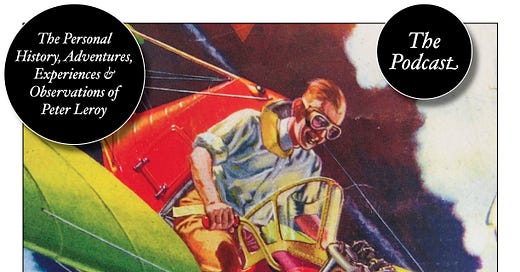






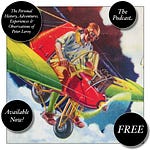
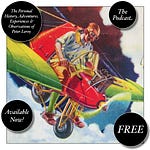
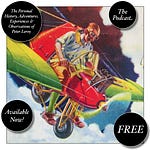
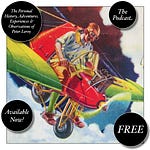

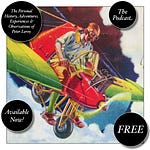
Share this post